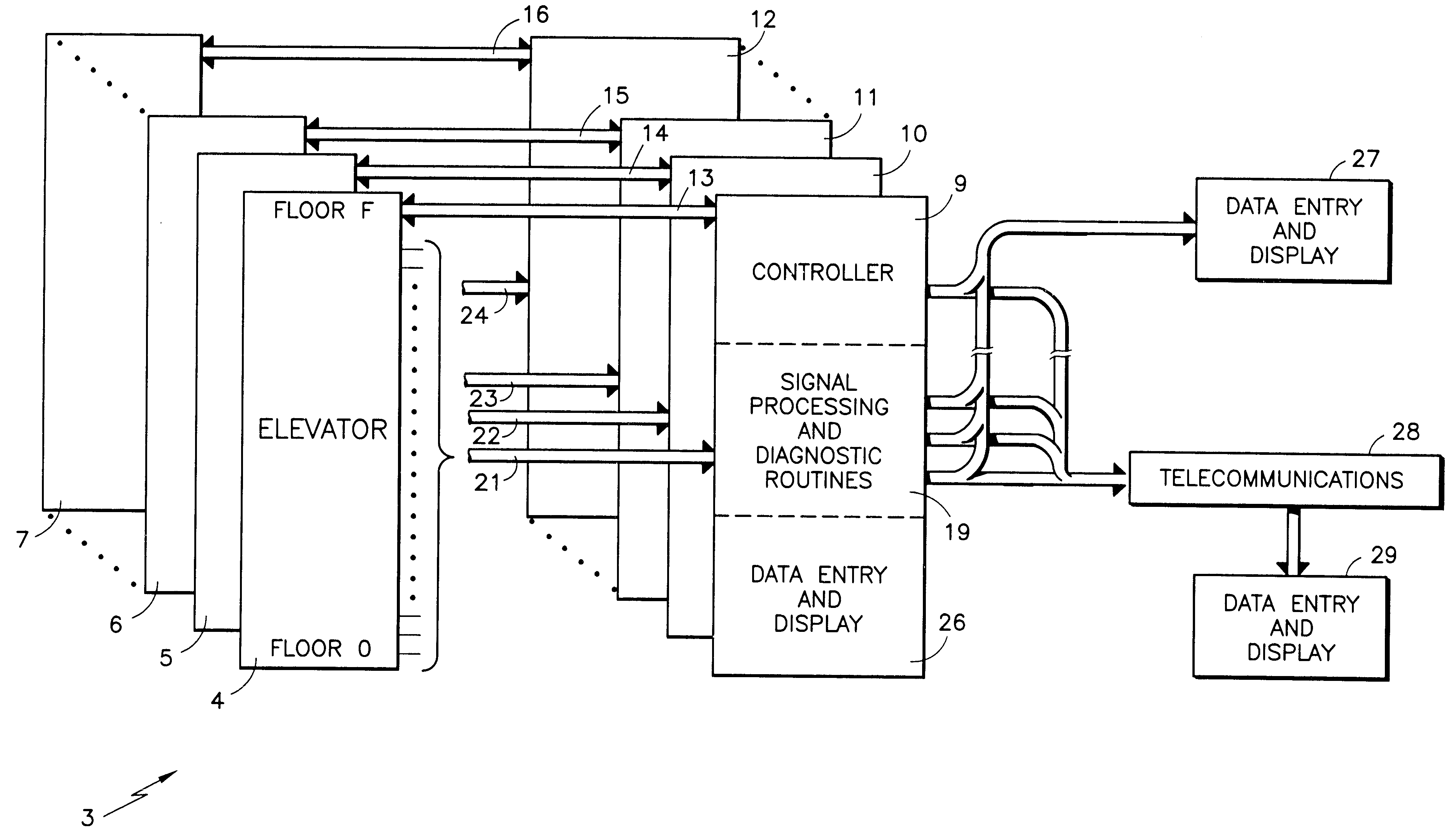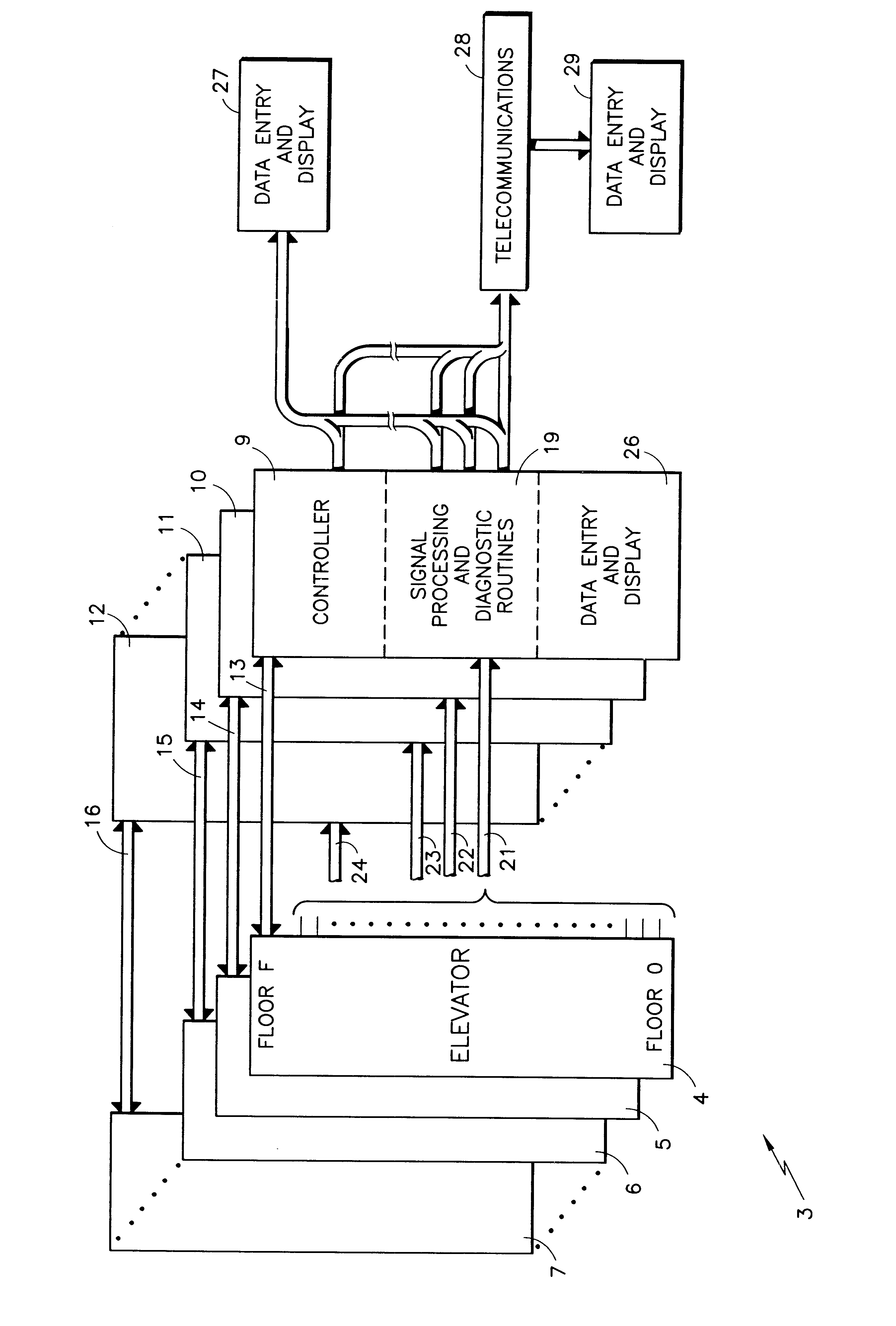Differentiating elevator car door and landing door operating problems
a technology for elevators and landing doors, applied in the direction of computers, instruments, elevators, etc., can solve the problems of prohibitively expensive elevator systems and the most complex mechanisms
- Summary
- Abstract
- Description
- Claims
- Application Information
AI Technical Summary
Benefits of technology
Problems solved by technology
Method used
Image
Examples
example 1
Prior Art:
Consider an elevator with 10 floors where f[i] is as follows (1=a flag; 0=no flag):
f[0]=1 f[1]=0 f[2]=0 f[3]=1 f[4]=1
f[5]=0 f[6]=0 f[8]=0 f[8]=1 f[9]=0
A problem has been identified at floors 0, 3, 4, and 8. No problem has been identified in the other floors. Since the problem occurs at at least 40% of the landings, the car door will be identified as the root of the problem in the prior art system.
According to the invention, in addition to the number of flags in the array f[i], the traffic pattern of the elevator being monitored is taken into account. A flag at a particular floor will only be as important as the contribution of that floor to the total number of operations being monitored. Therefore, this invention uses, besides the flag array f[i], another array with the number of runs to each floor monitored by landing, n[i], where i=0-F. Note that n[i] contains the number of runs per floor with at least one door operation rather than the number of door operations; this is...
example 2
Using the same f[i] as in example 1:
f[0]=1 f[1]=0 f[2]=0 f[3]=1 f[4]=1
f[5]=0 f[6]=0 f[7]=0 f[8]=1 f[9]=0
Suppose that the traffic pattern is as follows:
There is a flag in four floors and the number of runs to (initial door operations at) those floors is 77% of the total number of runs; therefore, we are confident enough to say that the problem is in the car door.
Suppose that the traffic pattern is as follows:
n[0]=100 n[1]=1,000 n[2]=100 n[3]=200 n[4]=150
n[5]=75 n[6]=70 n[7]=80 n[8]=100 n[9]=60
There still is a flag in four floors, but now the number of door operations at those floors is just 28% of the total number of runs. This means that the other 68% of the runs did not have any problem, so pointing to the car door is probably wrong. This invention points to the landing door in floors 0, 3, 4, and 8, instead of pointing to the car door.
PUM
 Login to View More
Login to View More Abstract
Description
Claims
Application Information
 Login to View More
Login to View More - R&D
- Intellectual Property
- Life Sciences
- Materials
- Tech Scout
- Unparalleled Data Quality
- Higher Quality Content
- 60% Fewer Hallucinations
Browse by: Latest US Patents, China's latest patents, Technical Efficacy Thesaurus, Application Domain, Technology Topic, Popular Technical Reports.
© 2025 PatSnap. All rights reserved.Legal|Privacy policy|Modern Slavery Act Transparency Statement|Sitemap|About US| Contact US: help@patsnap.com



